How to Fix Windows Volume Stuck at 100% Issue?
The volume typically gets stuck at 100% in the Windows operating system when the relevant drivers get corrupt. In most cases, it is caused by a corrupt update of the Realtek Audio Driver.

In other situations, it is caused by corruption issues related to the voice settings in Windows. In this guide, we have discussed different methods of fixing this issue in detail. Proceed with the one that fits your situation the best.
1. Restart your computer and adjust sound settings
The first thing that you can do is restart your computer to resolve any temporary bugs and then re-adjust the sound settings on your computer.
Here is how you can do that:
- Click on the Windows icon in the taskbar and click on the Power icon.
- Choose Restart from the context menu.
- Once the computer is restarted, right-click on the sound icon in the taskbar and choose Sound settings.
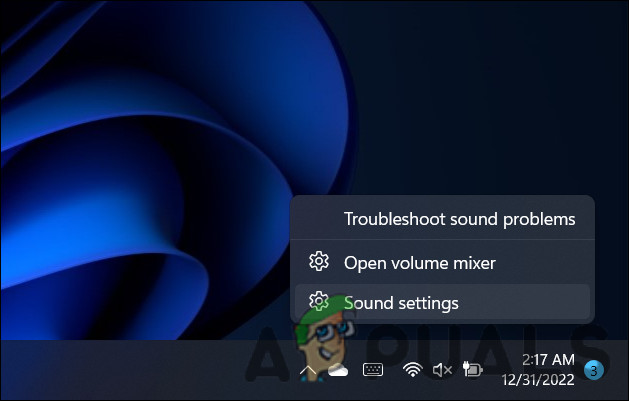
Click on the Sound settings option - Now, click on More sound settings in the following window.
- Next, in the Playback tab, right-click on your sound device and choose Properties.
- Head over to the Levels tab and adjust the sound as per your preferences.
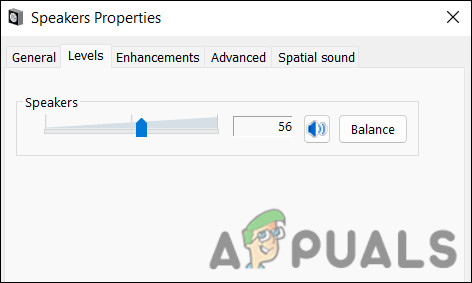
Adjust the sound levels - Click Apply > OK to save the changes.
2. Run the Audio Troubleshooter
Running the audio troubleshooter is the next step you should take if you experience any kind of sound-related problems on Windows. As part of Windows, this tool scans the system for any potential issues that might be causing audio issues.
In the event that problems are found, the troubleshooter will notify you and suggest relevant fixes. To run the troubleshooter, we will be using Windows Settings.
Follow these steps to run the playing audio troubleshooter:
- Press the Win + I keys together to open the Settings app.
- Choose System > Troubleshoot > Other troubleshooters.
- Then, locate the Playing Audio troubleshooter and click on its Run button. The troubleshooter will now begin scanning for errors in the system.
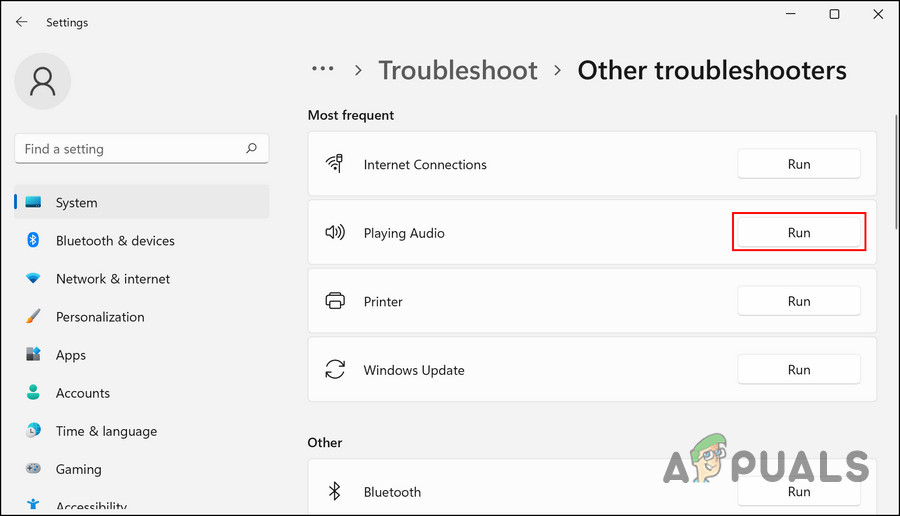
Run the Playing Audio troubleshooter - After the troubleshooter has finished scanning, check if any issues have been identified. After the troubleshooter has found a problem and suggested a fix, click Apply this fix.
- Otherwise, click the Close troubleshooter option and continue with the next solution.
3. Rollback the Audio Driver
As we mentioned earlier, the issue is typically caused when Realtek audio drivers gets a corrupted update. When the driver becomes faulty, you face issues regarding audio in Windows.
If this scenario is applicable, there are two ways of fixing the problem. You can either update the driver to the most latest version available, or you can downgrade to the stable version where the issue was not present.
Here is how you can perform the steps:
3.1 Update the Driver
We will be using the Device Manager utility for this purpose. Here is all that you need to do:
- Type Device Manager in Windows Search and click Open.
- Right-click the problematic driver in the Audio inputs and outputs section.
- Choose Update driver from the context menu.
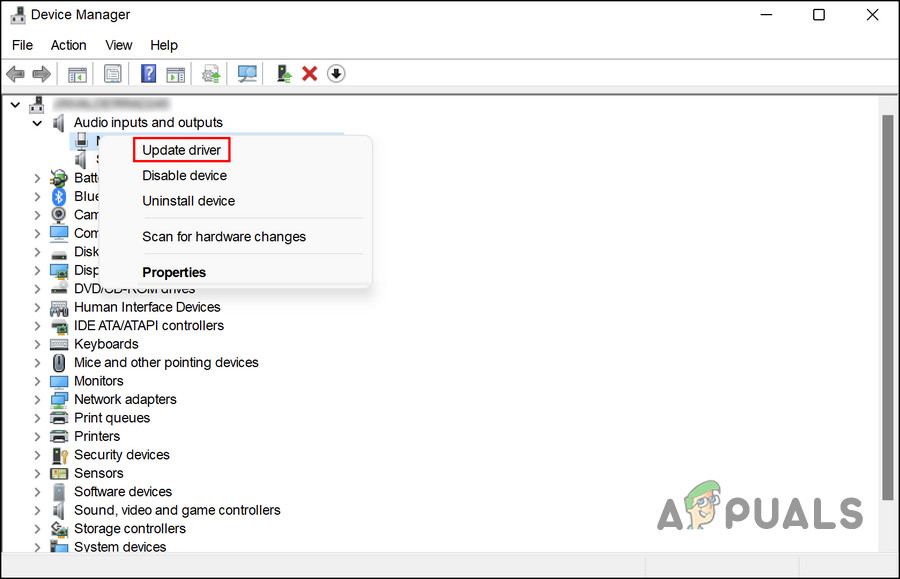
Update your audio driver - Click on Search automatically for drivers and then let the system select a driver for you.
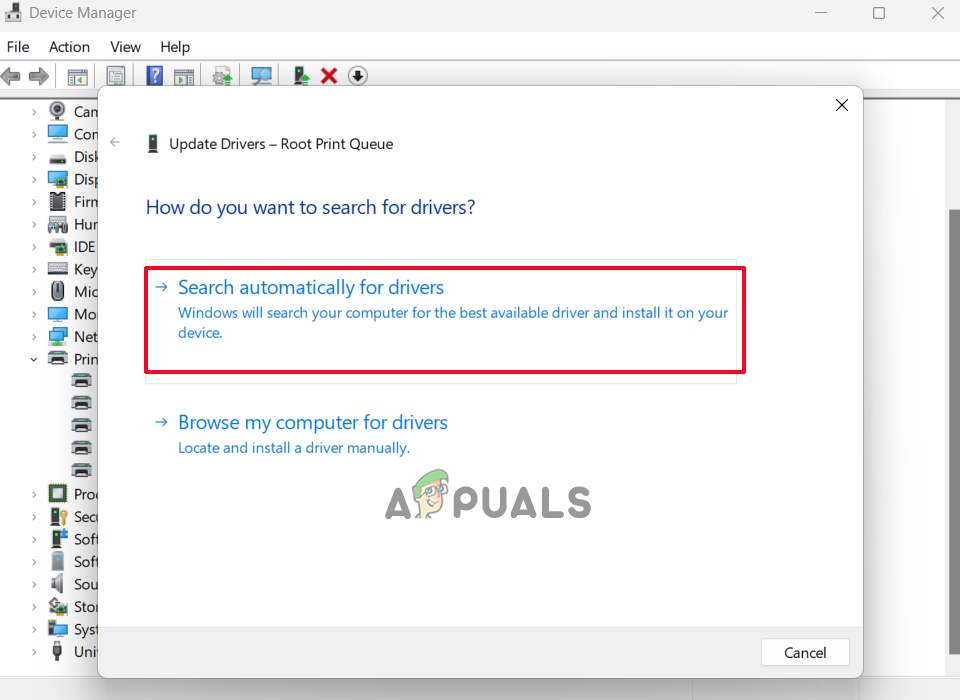
Select Search automatically for driver software - Proceed by following the on-screen instructions and restarting your computer. If the error persists, repeat steps 1-3.
- Select Let me choose from my computer’s available drivers this time.
- Pick a driver and install it.
- Finally, restart your computer and check if the issue is resolved.
Whenever you cannot find the latest driver for your audio device on your computer, you should visit the manufacturer’s website and download it. Follow the steps we just discussed above to install it.
3.2 Rollback the Driver
You can also revert the driver to an older state. Here is how:
- Follow the steps above to access the Audio and Inputs section.
- Right-click on the targeted driver and choose Properties from the context menu.
- Click the Roll Back Driver button in the Properties dialog.
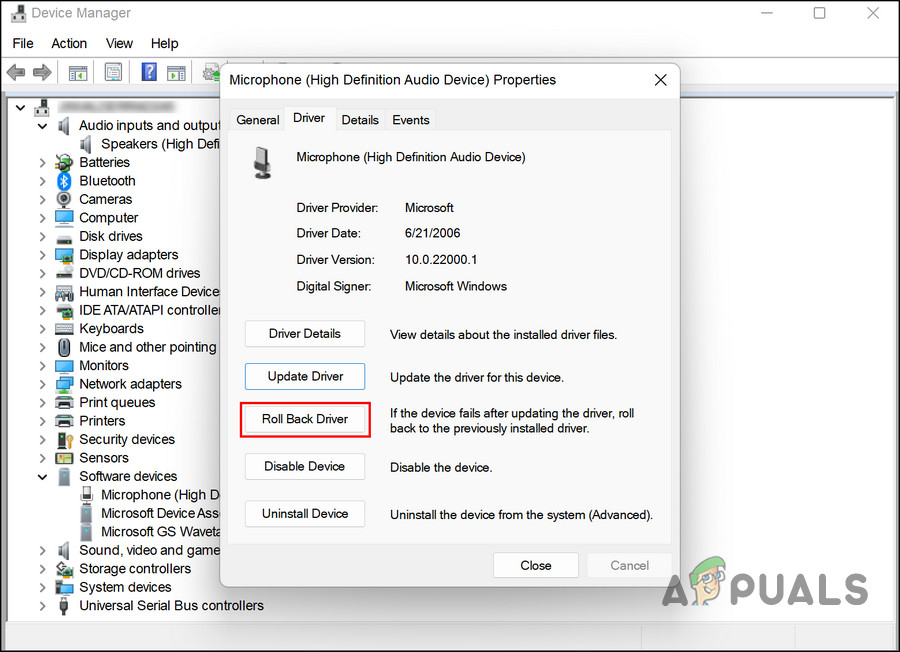
Rollback audio driver - Follow the on-screen instructions to proceed and then check if the issue is resolved.
4. Boot Into Safe Mode
There is also a chance that a background process is causing the problem. To check if this is the case, you can boot Windows into safe mode and try changing the volume from there.
Here is how you can boot in safe mode in Windows:
- Press Windows + R keys simultaneously on your keyboard to open a Run dialogue box.
- Enter msconfig in the text field of the dialogue box to open the System Configuration window.
- Now, head over to the Boot tab.
- Next, checkmark the box associated with Safe boot, select the Minimal toggle and leave everything else unchecked.
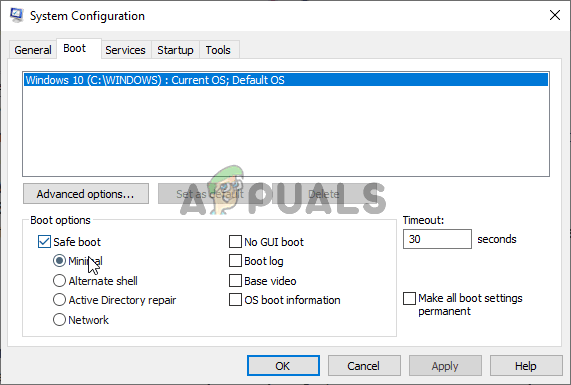
Booting into Safe Mode - Once done, click Apply and restart your PC to save the changes.
- Alternatively, press Windows + R keys simultaneously on your keyboard to open a Run dialogue box.
- Inside the text field of the dialogue box, type cmd and press Ctrl + Shift + Enter together to open up an elevated Command prompt.
- Once you are inside the Command Prompt window, copy and paste the commands mentioned below. Hit Enter to execute the command.
bcdedit /set {current} safeboot minimal - Once done, restart your PC to save the changes made.
Now, check if you can change the volume in the safe mode. If you can, then it implies that a background process is a culprit. In that case, you can try performing system restore to revert the system to a previous point in time.





